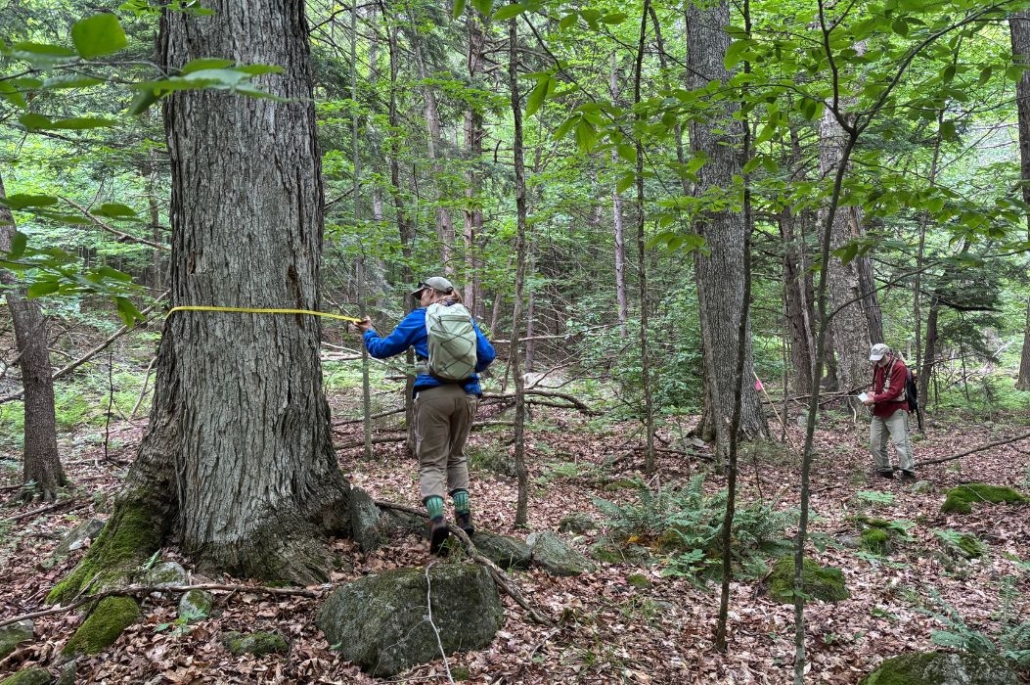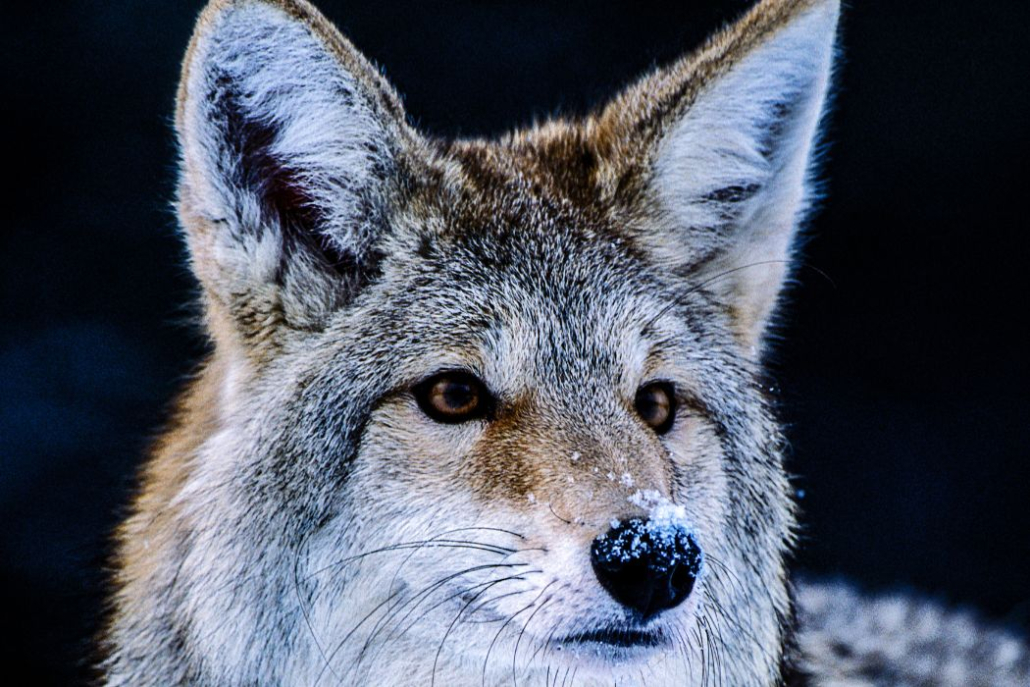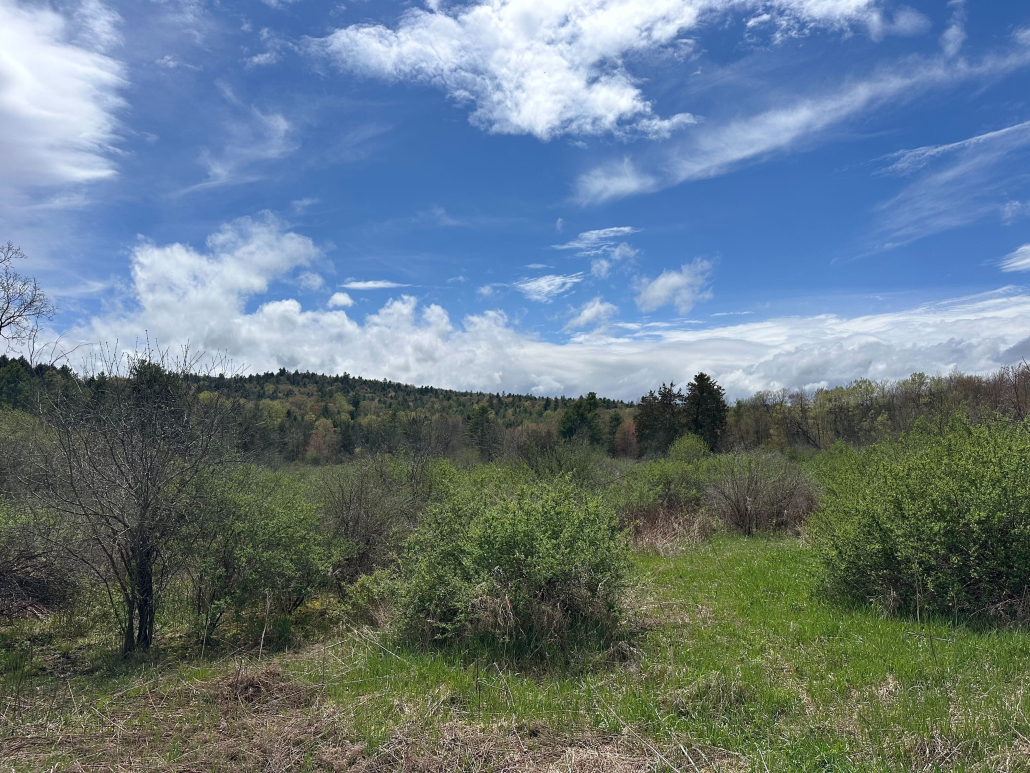A Woody Window into Wildlife Habitat and Behavior
As a member of NEWT’s Wildlands Ecology team, I study how ecological processes play out on our forever-wild preserves and easements. A key difference between these and managed forests is that the former tends to be “messier.” A walk through a rewilding forest, where human influence is minimal, will reveal landscape features like the exposed root balls of fallen trees (“tip-up mounds”) and other forms of dead and decaying wood strewn about the forest floor. This material, which scientists refer to broadly as “coarse woody debris” (CWD), is a critical ecosystem element that provides everything from homes for numerous species to vital soil nutrients. And because wildlands abound with CWD, which is often lacking in managed landscapes, they offer a terrific opportunity to better understand how wildlife interact with CWD as they go about their wild business.
To investigate further, I piloted a year-long CWD study at NEWT’s Woodbury Mountain Wilderness Preserve in Vermont to examine whether the size of a CWD element, such as a fallen tree, plays a role in how different species of wildlife make use of it. I deployed five pairs of cameras, 10 cameras in total, on five of our preexisting research plots across Woodbury Mountain. At each plot, I pointed one camera toward a large piece of CWD (greater than 40 centimeters in diameter), and the other toward a small one (10 to 30 centimeters in diameter). The motion-activated cameras collected footage over five months.
Reviewing the Footage
After collecting the cameras, I sorted through the more than 5.5 hours of footage, which captured 23 species, including raccoon, Ruffed Grouse, white-tailed deer, and more.
Typically, the largest of the species recorded made use of the larger CWD: a bobcat perching on a large fallen tree, a black bear family dancing across an old yellow birch, curious coyotes sniffing the cameras after walking across gnarled, decaying logs. Moose stepped over large trunks and weasels settled on branches to wait for an opportunity at dinner.
The footage of the small CWD featured a different suite of species. Hermit Thrushes and other songbirds alit in search of a snack, while flying squirrels leapt from tree limbs. Mink scampered along a sunlit branch, fisher cats stopped as though enjoying the quiet, and chipmunks bounded along limbs of fallen tree crowns in pursuit of nuts and seeds.
In Support of Messy Landscapes
The CWD interactions documented by each of the 10 cameras are hallmarks of wilderness. Downed wood might look unsightly to us, but as the footage demonstrates, wildlife might depend on it for a diversity of uses. The family of bears ambling single file across a rotting birch suggests that some species take advantage of higher ground to monitor for threats. A flycatcher landing on a detached branch and zipping out to catch a flying insect highlights how these landscape features we might not notice on a walk in the woods serve a vital purpose for aerial insectivores, an ailing class of birds.
The ecological benefits of CWD showcased by the footage are many. Dead wood forms part of the structural complexity typical of old forests, which tend to host higher levels of biodiversity and sequester more carbon than their younger, cleaner counterparts. But the footage also peels back another layer of significance. It allows us to peer into the wild, untrammeled world; to see many of the Northeast’s revered species thriving in their natural habitat. And it shows them doing so on a property that, thanks to NEWT’s forever-wild conservation method, is protected as wilderness in perpetuity, where Nature directs the ebb and flow of life and our wild kin have the freedom to exist simply for their own sake.




